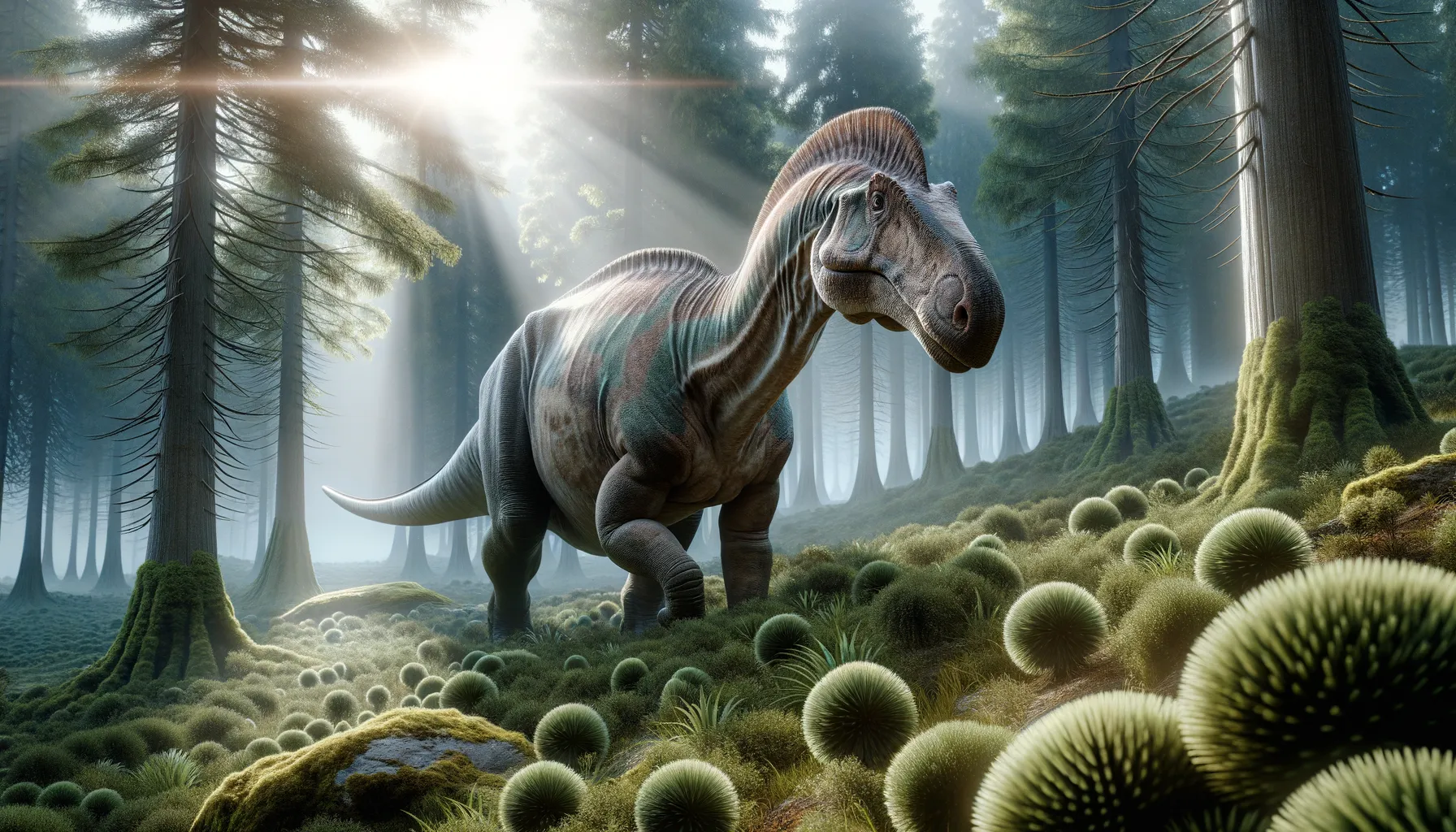
Hippodraco
A nimble grazer of ancient landscapes.
Period
Cretaceous
Length
Roughly 4.5 meters (15 feet) long.
Height
About 1.5 meters (5 feet) at the hips.
Weight
Approximately 350 kilograms (770 pounds).
Hippodraco was a plant-eating dinosaur from the Early Cretaceous period. This iguanodontid dinosaur was discovered in North America and had a distinctive horse-like appearance. With a long snout and robust body, it occupied regions that are now part of Utah. Its physical structure suggests it was well-adapted to grazing and moving through dense forests. Overall, Hippodraco offers important insights into the diversity and evolution of early plant-eating dinosaurs in its region.
Diet
Hippodraco was a herbivore, primarily grazing on foliage and low-lying plants. Its beak-like mouth was perfectly suited for nipping vegetation, making it an efficient eater in its Cretaceous environment.
Hunting
Being a herbivore, Hippodraco did not hunt for food. Instead, it foraged in its lush, forested surroundings, relying on an ample supply of plant life to sustain itself.
Environmental challenges
Hippodraco lived during a time when the environment was changing, with evolving plant life and the rise of flowering plants. Adapting to these changes meant accessing diverse food sources, sometimes competing with other herbivores. Additionally, it had to navigate the dangers posed by predatory dinosaurs that roamed the same habitats. Natural events such as weather fluctuations and geological changes would also have impacted its living conditions.
Speed
Moderate, typical for a medium-sized herbivore.
Lifespan
Likely around 20-30 years.
First discovery
Discovered in 2010 in Utah, USA.
Fun Facts
- Hippodraco's name means 'horse dragon' because its skull shape reminded scientists of a horse.
- This dinosaur lived during the Early Cretaceous period, about 125 million years ago.
- Hippodraco was discovered in Utah, USA, indicating it roamed ancient North America.
- It was a herbivore, meaning it primarily ate plants and had a mouth suited to grazing.
- Hippodraco is believed to be a relative of Iguanodon, another well-known herbivorous dinosaur.
- This dinosaur was relatively small compared to other giants of its time, about 5 meters long.
- The first fossils of Hippodraco were described in 2010, making it a relatively recent discovery.
Growth and Development
Hippodraco likely hatched from eggs and went through several growth stages before reaching full size. As a juvenile, it would have stayed close to adults for protection from predators. Its growth involved developing sturdy limbs and a bony frame to support its plant-based diet. Survival to adulthood required avoiding predation and finding enough food in its competitive environment.
Habitat
Hippodraco inhabited floodplains and forested areas, thriving in the varied terrain of Early Cretaceous North America. Its habitat provided abundant plant life for grazing alongside streams and riverbanks. The environment likely consisted of different climates, offering both humid conditions and periodic dry spells.
Interaction with other species
Hippodraco shared its habitat with various herbivorous and carnivorous dinosaurs, competing for food resources with other plant-eaters. Its interaction with predator dinosaurs often involved defensive strategies, such as alerting herd members or fleeing. Herbivore herds might have provided mutual protection and shared knowledge of food-rich areas.
Natural lifespan
Hippodraco might have lived for 20 to 30 years in the wild.
Reproduction
Reproduction involved laying eggs, likely in communal nesting areas to protect the young from predators. Parental care might have included guarding eggs until they hatched and possibly tending to young hatchlings. These practices were crucial to ensure the survival of the species.
Social behaviour
Hippodraco may have lived in herds or small groups to provide mutual protection against predators. Social behaviors could have included communication through vocalizations or body movements to alert group members of danger. This social structure also facilitated efficient foraging and resource sharing within a group.
Fossil locations
Fossils of Hippodraco have been primarily found in Utah, USA, offering vital insights into its morphology and lifestyle. The initial discovery site has been a focal point for paleontologists studying Early Cretaceous ecosystems in North America. These locations continue to be investigated for further understanding of the region's prehistoric biodiversity.
